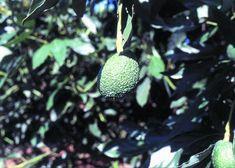
Avocado producers and trade bodies have found a great deal of success in recent years reinventing the fruit as a tasty and, crucially, healthy addition to daily menus.
Last year, though, proved a chastening one for growers in many regions as poor weather hampered crops and export volumes were reduced as a result.
The situation has been so bad in Chile, for example – where drought conditions stymied the crop – that the Chilean Hass Avocado Committee (CHAC) has decided to suspend much of its consumer marketing activities in the UK and across Europe for the coming year.
'Following the drought, the CHAC has decided to organise a smaller marketing effort in Europe this season,' Adolfo Ochagavia, president of the CHAC, told Eurofruit. 'We will be carrying out some public relations activities, plus we'll participate at Fruit Logistica 2013. We hope to return with a bigger marketing programme in 2013-14.
The avocado crop in Chile looks set to be around eight per cent down this year at 185,000 tonnes, with exports pegged at 100,000-105,000t.
But there is better news elsewhere, with producers in other key regions expecting a better crop following a variety of challenges. In South Africa, where 2011 exports were hit by hail damage, producers are reporting a bumper crop for this year. Growers are expected to ship some 12.1 million cartons by the season's end this month, almost double the 6.8m cartons reported last year.
Nearly a fifth of the country's exports are sent to the UK, with the split 62-38 per cent in favour of Hass over greenskin. 'Quality has been very good as well as volumes,' says Derek Donkin, CEO of the South African Avocado Growers' Association (SAAGA). 'Growers, packers and exporters were clearly diligent in applying best practice in order to deliver high-quality fruit for export.'
SAAGA also launched its Avocado Manifesto this year as a blueprint for retailers to boost sales. The report highlighted areas where retailers could make in-store changes to encourage higher purchasing, and it dovetails with the PR push via the Summer Avocados campaign. 'While we don't expect to see the results in just one season, there are already signs that the multiples have taken notice, particularly around the area of ripeness indication.'
Over in Spain, several producers in the south of the country have said they expect to increase their volumes of fruit on the back of investment in new ripening technology. The town of Velez-Malaga, a key producing area, saw output of 40,000t last year, but expects to reach as much as 50,000t in the coming season, an 'on' year.
The completion of a new ripening centre at the region's largest producer, Trops, is also set to put the company in a position to offer more options, such as ready-to-eat and avocado derivatives.
And in Israel, planted area has reached some 7,000ha, up from 4,000 in 2001, with some 800ha of young plantations. Galilee Export expects to market around 35 per cent of the crop, with is a key source in the October-May European window. It has also invested in computerised irrigation systems and is saving resources through the use of treated water.
Last week the company began its avocado season by exporting the green-skinned Ettinger variety, and is set to follow this with Pinkerton, Fuerte, Arad, Ardith, Nabal, Reed and Hass. —